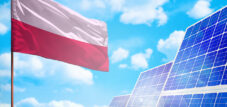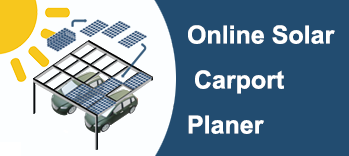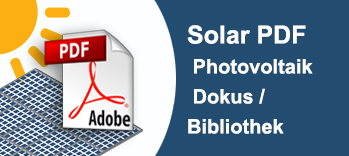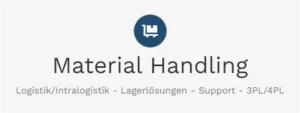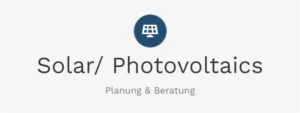Park Słoneczny | Largest solar park in Poland/Lower Silesia northeast of Wrocław – for 303 MW on over 260 hectares
Xpert pre-release
Language selection 📢
Published on: August 17, 2025 / Updated on: August 17, 2025 – Author: Konrad Wolfenstein

Park Słoneczny | Largest solar park in Poland/Lower Silesia with 303 MW on over 260 hectares northeast of Wrocław – Creative image: Xpert.Digital
Larger than 360 football fields: Is Poland's new solar record for 117,000 households being built here?
### From coal-mining country to solar champion: This mega-project is changing Poland's energy future ### German solar giant for Poland: This power plant supplies an entire city ### Poland's solar revolution: A new 303-megawatt project is breaking all dimensions ### Energy miracle on the Oder: Why Germany is now looking closely at Poland ### 117,000 households supplied: This solar project in Lower Silesia is making history ###
This could be Poland's largest PV farm – A record-breaking project is being built in Lower Silesia
In the Lower Silesian Voivodeship, an extraordinary energy project is taking shape that has the potential to fundamentally transform the solar energy industry in Poland. In July 2025, the Dresden-based VSB Group secured the contract for a photovoltaic park with an installed capacity of 303 megawatts peak, making this project one of the largest solar projects in the country.
The project, to be built on an impressive area of over 260 hectares northeast of Wrocław, marks a significant milestone for Poland's energy transition. Once fully operational, the plant will generate enough clean electricity to supply approximately 117,000 households. Construction is scheduled to begin in October 2025, with grid connection planned for the second quarter of 2027.
A market experiencing rapid growth
Poland has developed into one of the most dynamic photovoltaic markets in Europe in recent years. At the end of 2024, the country exceeded the impressive 21 gigawatt mark of installed photovoltaic capacity, having already reached the 20 gigawatt threshold in October 2024. This rapid development underscores the enormous potential of the Polish solar market, which is now one of the most important in the European Union.
Particularly noteworthy is the fact that in June 2025, renewable energies reached a share of 44.1 percent of the Polish electricity mix for the first time, surpassing traditional coal-fired power generation at 43.7 percent. This historic turning point underscores the speed of the energy transformation in Poland and the central role of photovoltaics in this process.
Forecasts for future development are extremely optimistic. Analysts expect installed photovoltaic capacity to reach between 22 and 27 gigawatts by 2025, corresponding to an annual growth of over 20 percent. By 2030, photovoltaic capacity is expected to rise to 35.5 gigawatts, which would account for approximately 68.9 percent of the total planned renewable energy capacity in Poland.
Lower Silesia as a center of solar energy
The Lower Silesia region has become a focal point of Polish photovoltaic development. In addition to the VSB project, numerous other solar parks are being built here, fundamentally changing the region's energy profile. SachsenEnergie AG, for example, has acquired three solar parks with a total capacity of 23.1 megawatts peak in the region, including the Jawor plant with 12.0 MWp, Jelenia Góra 1 with 6.7 MWp, and the Jelenia Góra 2 expansion with 4.4 MWp.
International corporations are also taking advantage of the region's favorable conditions. PepsiCo has commissioned a 3.5 MWp photovoltaic system near Wrocław, which covers 24 percent of the total energy needs of PepsiCo's most modern plant in the European Union. These examples demonstrate how companies from various industries are turning to solar energy to reduce their energy costs and achieve sustainability goals.
Financing models and funding structures
The VSB project benefits from government funding through a Contract for Difference (CfD) agreement, which guarantees long-term price stability. These CfD contracts are a proven tool for mitigating risk in large-scale renewable energy projects and provide the necessary planning security for investors. The mechanism provides for projects to initially receive funding for up to 25 years, with guaranteed, inflation-indexed remuneration for the electricity generated during the first 100,000 hours of operation at full capacity.
The Polish Energy Regulatory Authority (URE) regularly conducts auctions in which project developers compete for government subsidies. These auctions have proven to be an effective means of both keeping costs low for consumers and promoting the expansion of renewable energy. The new system has replaced the previous certificate model and, through mandatory direct marketing based on the differential pricing system, offers strong guidance on electricity price developments.
Technological developments and innovations
The Polish photovoltaic market is characterized by high technological diversity. Projects range from small rooftop systems for prosumers to large ground-mounted systems in the megawatt range. A particular trend is the integration of energy storage solutions, with around 10 percent of planned projects including battery storage. Regarding large-scale solar projects, approximately one-quarter plan to build storage facilities with a total capacity of 1.7 gigawatts.
In the medium term, the VSB Group plans to develop its Lower Silesia project into one of Europe's largest hybrid energy projects, combining photovoltaics, battery storage, and wind energy. This hybrid approach maximizes energy generation efficiency and contributes to grid stability.
New: Patent from the USA – Install solar parks up to 30% cheaper and 40% faster and easier – with explanatory videos!

New: Patent from the USA – Install solar parks up to 30% cheaper and 40% faster and easier – with explanatory videos! – Image: Xpert.Digital
At the heart of this technological advancement is the deliberate departure from conventional clamp fastening, which has been the standard for decades. The new, more time- and cost-effective mounting system addresses this with a fundamentally different, more intelligent concept. Instead of clamping the modules at specific points, they are inserted into a continuous, specially shaped support rail and held securely. This design ensures that all forces occurring – be they static loads from snow or dynamic loads from wind – are evenly distributed across the entire length of the module frame.
More about it here:
Hybrid parks and storage: How Poland could become the solar capital
Current market leaders and competitive situation
The Polish photovoltaic market is dominated by various national and international players. Currently, the country's largest solar park is Goldbeck Solar's Zwartowo, with an installed capacity of 204 megawatts in the first phase and a planned 290 megawatts upon completion. This project is considered the largest solar power plant in Central and Eastern Europe and supplies approximately 153,000 households with green electricity.
RWE has also established a strong presence in the Polish market and already operates solar plants with a total capacity of 54 megawatts and wind farms with 541 megawatts of installed capacity. In the recent Polish renewable energy auction, RWE also won contracts for 31 additional solar projects with a total capacity of 84 megawatts.
Other significant players include companies such as Qair Polska, R.Power, and Lightsource Renewable Energy Poland, which have been identified as investors in 1,496 projects with a total capacity of over 3.3 gigawatts. This diversity of market players ensures healthy competition and drives innovation.
Challenges and market barriers
Despite the positive development, the Polish photovoltaic industry faces several challenges. One of the biggest hurdles is the increasing difficulty in connecting new systems to the power grid. Due to increasing congestion, more and more applicants are being denied access to the grid for their renewable energy systems, making projects with previously granted connection conditions particularly valuable.
The COVID-19 pandemic and the war in Ukraine have led to significant disruptions in supply chains and drastically increased asset prices. In addition, investment funds are experiencing significant difficulties in financing further investments, delaying project implementation.
Another aspect is the change in the support system for prosumer micro-systems. The discontinuation of applications under the preference-based support system and its replacement with market-oriented net billing has tightened the framework for smaller systems.
Economic importance and jobs
The expansion of photovoltaics in Poland has significant economic implications. The Polish photovoltaic market could reach a value of up to 80 billion zloty within a decade, benefiting retailers, installers, banks, and users. Annual market turnover already exceeds 5 billion zloty, with an expected increase of 25 percent per year.
Large-scale projects like the VSB project in Lower Silesia not only create jobs during the construction phase, but also offer long-term prospects for the maintenance and operation of the plants. PepsiCo's investment of over one billion zloty near Wrocław has created several hundred new jobs and demonstrates how industrial companies can gain strategic advantages through their own solar plants.
International cooperation and EU policy
The development of the Polish photovoltaic market is significantly influenced by the EU Solar Strategy. As part of the REPowerEU plan, an ambitious solar energy strategy was adopted, which envisages increasing installed photovoltaic capacity to more than 320 gigawatts by 2025 and to almost 600 gigawatts by 2030 across the EU.
New EU regulations make the installation of photovoltaic systems on building roofs mandatory. In Poland, these regulations will be implemented gradually: starting in 2026 for new commercial and public buildings, and starting in 2029 for new residential buildings. This regulation will significantly increase the number of systems and contribute to the further popularization of solar energy.
German companies play a particularly important role in the Polish market. SUNfarming, with its 11-megawatt portfolio, has become one of the largest solar investors in Poland, while BayWa re already realized what was then the largest subsidy-free solar park in Poland with 64.6 MWp in 2020.
4,000 projects, 12.3 GW approved — Poland's photovoltaics explode
The outlook for the Polish photovoltaic industry is extremely positive. With over 4,000 solar projects in various stages of development and a total planned capacity of more than 19 gigawatts, Poland has one of the largest project pipelines in Europe. Nearly 1,500 projects with a cumulative capacity of over 12.3 gigawatts have already received construction permits and could be considered in upcoming tenders.
The VSB project in Lower Silesia could indeed become Poland's largest photovoltaic park, ushering in a new era of large-scale solar energy use. The planned expansion into a hybrid energy project with battery storage and possibly wind energy demonstrates the industry's innovative strength and the potential for integrated energy solutions.
Poland already occupies a leading position in the European Union in terms of photovoltaic capacity growth, ranking fourth in terms of photovoltaic output growth. This position will be further consolidated with projects like the VSB solar park in Lower Silesia, making Poland one of the most important solar markets in Europe.
The combination of favorable climatic conditions, a supportive political framework, falling technology costs, and growing environmental awareness creates ideal conditions for the continued dynamic development of the Polish photovoltaic industry. The project in Lower Silesia exemplifies this positive development and could become a symbol of Poland's successful energy transition.
Look, this little detail saves up to 40% installation time and costs up to 30% less. It's from the USA and patented.

New: Assemble-ready Solar systems! This patented innovation accelerates your solar construction massively
The heart of ModuRack's innovation is its departure from conventional clamp fastening. Instead of clamps, the modules are inserted and held in place by a continuous support rail.
More about it here:
Your partner for business development in the field of photovoltaics and construction
From industrial roof PV to solar parks to larger solar parking spaces
☑️ Our business language is English or German
☑️ NEW: Correspondence in your national language!
I would be happy to serve you and my team as a personal advisor.
You can contact me by filling out the contact form or simply call me on +49 89 89 674 804 (Munich) . My email address is: wolfenstein ∂ xpert.digital
I'm looking forward to our joint project.









